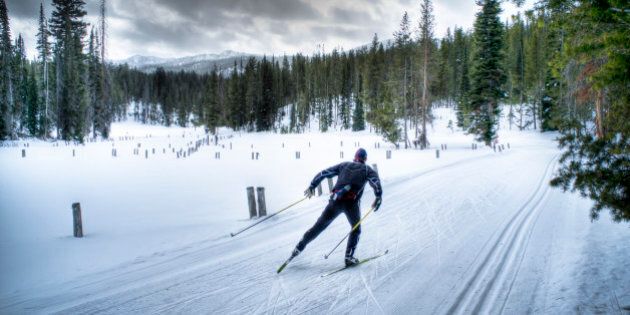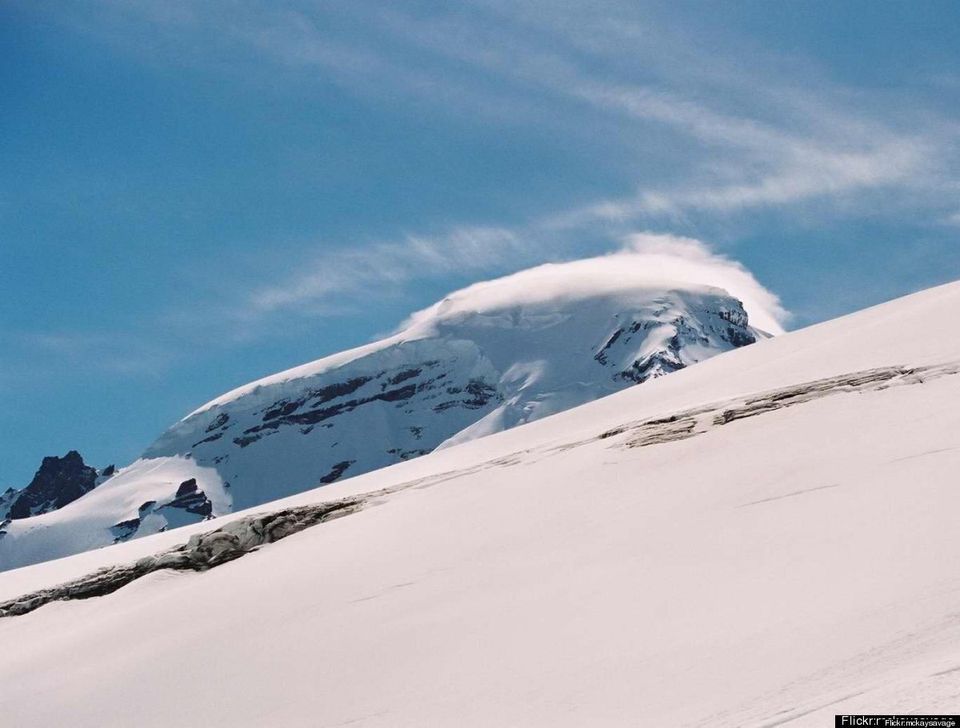
I love being outside. If you follow my blog, you will know I write about the outdoors frequently. Being in nature lifts my soul and increases my creativity. It also makes me happy, and I have made some wonderful friends spending time outside.
The new sport that I am falling in love with is skate skiing. It's an amazing workout and fantastic way to spend time outside, this winter sport can be found at many ski hills.
To find out how to start skate skiing, I spoke with Michael Thomas, Nordic operations manager at Cypress Mountain. Michael shared all the top tips on how you can start skate skiing.
What is skate skiing?
Skate skiing is a relatively new technique that evolved in the early 1980s that completely revolutionized the sport of cross country skiing. In essence, it was discovered that ski racers could generate more power and propel themselves with more acceleration and velocity by employing a skate movement similar to ice skating.
An American skier, Bill Koch, used the technique to win the World Cup title in 1982. The resultant controversy lead to the development of an entirely new category of cross country ski racing termed "freestyle" with the traditional technique being termed "classic."
How is skate skiing different from classic skiing?
Classic skiing involves body mechanics that approximate walking down the street. That is the arms and legs move in equal and opposite directions and the skis slide parallel along tracks in the snow.
Power is generated through "kick and glide" phases. In skate skiing power is generated through alternate lateral (out to side) leg pushes. The motion approximates ice skating but there are some subtle differences. Both techniques employ the use of poling action to generate additional power via the core and arms.
What are the best tips to start?
Although there are some folks who are self-taught it is highly recommended that new entrants to the sport take lessons so they can be introduced to proper technique from the start and to avoid the development of bad habits.
Skate skiing efficiently involves the use of a variety of maneuvers best suited to the type of terrain and snow encountered.
Do you have to be in great shape to skate ski?
Like all sports it is recommended that new participants be reasonably fit in order to learn and actively participate. If someone is reasonably active and does not live a sedentary lifestyle he/she should be fine to start. Pre-existing injuries to ankles, knees, hips or shoulders could pose problems as well.
Ultimately, it is up to the participant to determine the limits of what he/she can reasonably endure. Skate skiing is very popular as a cross training activity, especially for cyclists and kayakers.
Any other tips?
Everyone has a different learning curve and athleticism and fitness are no guarantees if immediate success. Like for any sport it is essential to be patient and to not get too frustrated early. If possible it is best to register for a series of lessons that allow for progressive development and the opportunity for practice and feedback.
There are a variety of skate clinics throughout the winter season. Suitable clothing (running or cycling attire usually works unless it is very cold in which case appropriate layers should be worn) is essential as well as proper hydration and snacks such as energy bars for longer outings.
To find out the best tips on staying warm and comfortable skiing, I spoke with Michael Connor, MEC Toronto store staff. Michael provided his top tips:
What to wear when skiing?
Layers are important.
Investing in great "next to skin" base layers is important. This layer, whether knit from merino wool yarns or synthetics, does most of the heavy lifting in keeping us comfortable. This layer manages our micro climate by moving moisture away from our skin keeping us dry and comfortable.
We can use the same base layer garments across a wide spectrum of activities and temperatures.
No cotton
When cotton gets damp it loses all of its insulation value and takes a very long time to dry. Avoid cotton clothing if you're going to be active in cold weather.
Top Tips To Keep Your Hands Warm!
Warren Springer, MEC in-store expert shared some of his knowledge about how to keep hands warm.
How to choose the best gloves for Nordic skiing?
Fit is important for Nordic ski gloves. Make sure you have a snug fit that moves with you. This is why we recommend trying a glove with the pole you intend on using.
When choosing a glove you should ask yourself what kind of weather you're prepared to ski in. If you're a fair-weather skier you needn't worry about having protection from snow and rain and focus your concerns on breathability and wind protection.
How to care for gloves?
Dirt and oils can negatively affect a glove's breathability, as grime can interfere with the microscopic pores that allow the glove to breathe. We suggest washing them by hand in warm water and mild soap.
What you're wearing on your body can also affect your hands. Make sure you're head and core is warm because once your core temperature drops, the body will constrict the blood from limbs and focus on warming the core, which means cold hands.
I am going to use these amazing tips when I am out on the slopes!
Let's have the best winter ever!
Follow HuffPost Canada Blogs on Facebook
MORE ON HUFFPOST:
